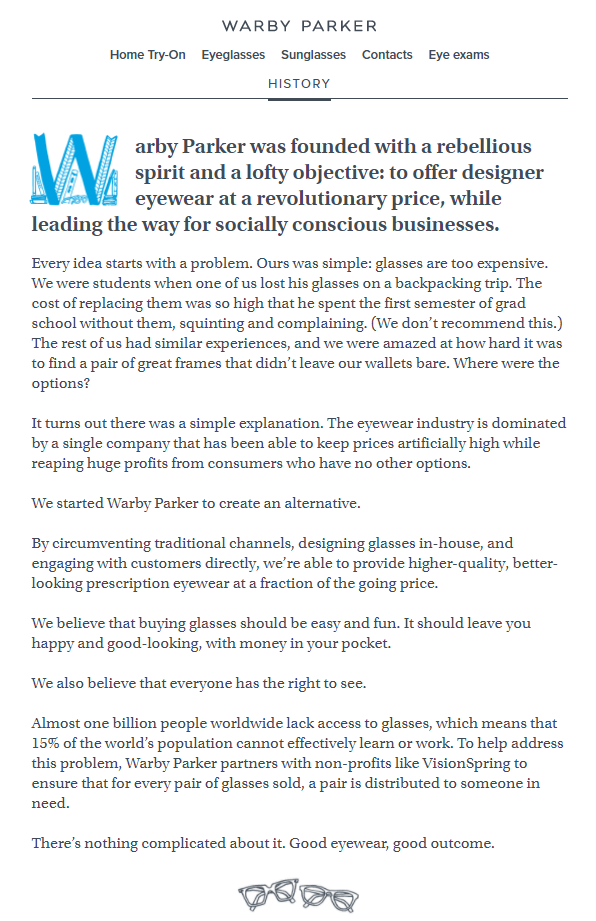Warby Parker's messaging is working
Yesterday as I stood in line at the post office, a person behind me noticed my Warby Parker frames. “Is the hype really worth it?” They asked me.
They had a point. When I found out I needed glasses two years ago, the first brand I thought of —and the only brand I researched—was Warby Parker. Why though?
Simply because they’ve nailed their messaging. They’re not a glasses company. They’re a fashion essential for my generation. An alternative to what got you called “four-eyes” in elementary school or what your grandpa reaches for each time he reads something. A marker that you support socially conscious business.
I still know nothing about glasses, but I bet I’m wearing Warby Parker for their messaging, not because they make the best products.
I don’t know if the hype is really worth it, but I do know that the hype is really working.
To switch gears for a second, in an interview with Eddie Biroun (episode #228), he describes how branding is really about messaging.
Brands need to communicate three main points, he says:
Who they’re trying to help
Why they’re trying to help
What is so compelling and different about the way they’re helping
The way to do this? Eddie says it all comes back to the words you use. The copy.
There’s one extra point I'd add to the list:
How you (the audience) can use their help
That last point is there to drive action.
Of course, branding is a lot more than *just* great copy. But without compelling copy, your brand’s message is at best unclear and at worst a turn-off.
Going back to the Warby Parker example, I love Warby Parker’s copy on their history page (below). It answers the questions:
Who they’re trying to help: People who think designer glasses are too expensive and want an alternative, while also contributing to a social purpose.
Why they’re trying to help: The eyewear industry has been taking advantage of its consumers and they’re here to revolutionize it.
What is so compelling and different about the way they’re helping: For every pair of glasses sold, one is donated to someone who can’t afford them.
How you (the audience) can use their help: They’ll make you “happy and good-looking, with money in your pocket.”

